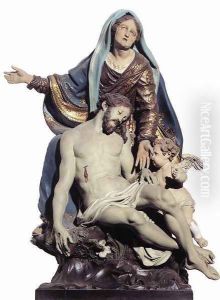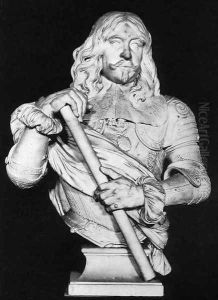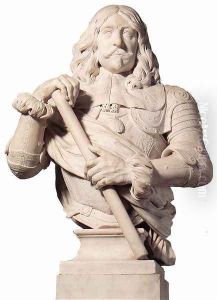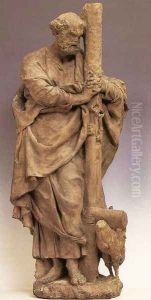Artus Quellin I Paintings
Artus Quellinus the Elder, also known as Artus Quellin I, was a prominent Flemish sculptor born in 1609 in Antwerp, which was then part of the Spanish Netherlands. He came from a family of artists, which included his brother, the painter Erasmus Quellinus II, and his nephew, Artus Quellinus the Younger, who also became a notable sculptor. Artus was trained by his father, Erasmus Quellinus I, who was a sculptor as well.
Artus Quellinus the Elder's work was heavily influenced by the Italian Baroque style, particularly the works of Gian Lorenzo Bernini, whom he may have studied under during his time in Rome. After returning to Antwerp from Italy in the 1630s, he became a master in the Guild of Saint Luke and established his own workshop.
Quellinus is best known for his decorative sculptures that adorn public buildings and churches. His most famous work is the sculptural program for the Amsterdam Town Hall (now the Royal Palace Amsterdam), which he worked on from 1650 to 1665. This project was a massive undertaking and is considered one of the highlights of Dutch Baroque sculpture. The program includes various allegorical figures, historical reliefs, and portraits that are praised for their dynamic composition and vitality.
Throughout his career, Artus Quellinus the Elder collaborated with other artists and took on numerous students, influencing the next generation of Flemish sculptors. He worked on both religious and secular buildings, creating altarpieces, tombs, and portraits in marble and other materials. His style characterized by a combination of dramatic expression, detailed naturalism, and a sense of grandeur, significantly impacted the development of Baroque sculpture in the Low Countries.
Artus Quellinus the Elder's work was held in high esteem during his lifetime, and he received commissions from various patrons, including the royalty and the city authorities. His influence extended beyond his immediate surroundings as his style was disseminated through the works of his pupils and followers. He passed away in Antwerp in 1668, leaving behind a legacy that cemented him as a leading figure in Flemish Baroque sculpture.



